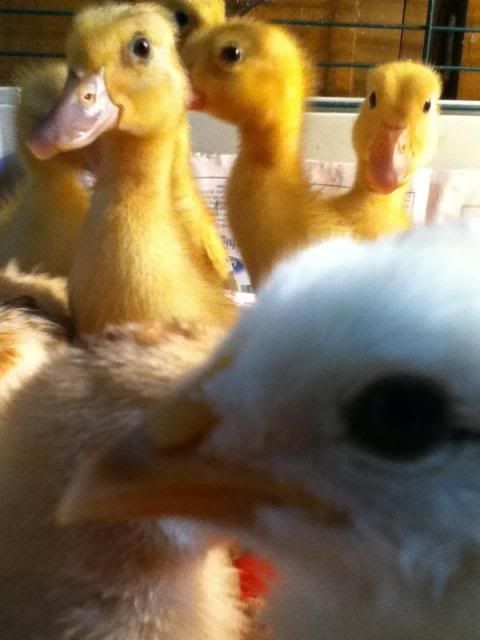So... He wants Indian Runner ducks. I describe these as "Bowling Pins with Bills". Keeping in mind that a lot of our farming/pet choices are made by asking ourselves "what will benefit the farm and also make us laugh until we pee our pants?" the choice of Runner ducks is obvious.

They come in a variety of colours from solid white to black with an iridescent green sheen. According to the Indian Runner Duck Association (yes, that is real, I didn't make it up. *grin*):
Indian Runners are a very special breed of domestic duck. When they were imported into Europe they attracted attention because of their tall, upright bodies and their incredible reputation for egg-laying. They had been found in the East Indies, from where they get their present name, but were referred to as ‘Penguin Ducks’ by Dutch explorers and some of the early importers.
And according to Wikipedia:
Indian Runners are an unusual breed of domestic duck. They stand erect like penguins and, rather than waddling, they run. The females usually lay about 150 – 200 eggs a year or more, depending whether they are from exhibition or utility strains. They were found on the Indonesian Islands of Lombok, Java and Bali where they were 'walked' to market and sold as egg-layers or for meat. These ducks do not fly and only rarely form nests and incubate their own eggs. They run or walk, often dropping their eggs wherever they happen to be. Duck-breeders need to house their birds over night or be extremely vigilant in picking up the eggs to prevent them from being taken by other animals. Keeping the birds in sheds until well after dawn is reportedly the best solution.
The ducks vary in weight between 1.4 and 2.3 kg (3-5 lbs). Their height (from crown to tail tip) ranges from 50 cm (20 inches) in small females to about 76 cm (30 inches) in the taller males. The eggs are often greenish-white in color, but these too vary.
Indian Runners love foraging. They also like swimming in ponds and streams, but they are likely to be preoccupied in running around grassy meadows looking for worms, slugs, even catching flies.
The eggs and foraging for bugs (they are a very active duck, and are fantastic at bug hunting, as all ducks are) are the "farm" reason for having them. Laughter is the real reason, though.
This is what they could look like when they are grown:
Now ours are just hatchery ducks from Tractor Supply, So they won't be super high quality and super "upright", but we don't need that anyway. They were marked down because they had been there a week already and the new shipment comes in today. I figured they would just have some Pekins and planned to get two to make the Mister happy.... Pekin ducks are the standard white duck most folks are used to seeing.

So.... I almost "squeeee"ed out loud when I heard they had Runner ducks. We ended up with two Pekins and four Runners for what I had planned to spend on just the two Pekins. They are rooming temporarily with the chicks I hatched.


No clue what colour they will be, one has a darker bill than the others, and at least three of the runners seem to have pattern starting to show on their foreheads.

The ducklings are cute as can be. The adults...well... the jury is still out on that! They look a bit strange. They look like they should have had arms and they were victims of thalidomide! But, being an animal lover, I'm sure if I saw them up close and personal... I'd fall in love, too!
ReplyDeleteDucks are cool !!!!
ReplyDelete